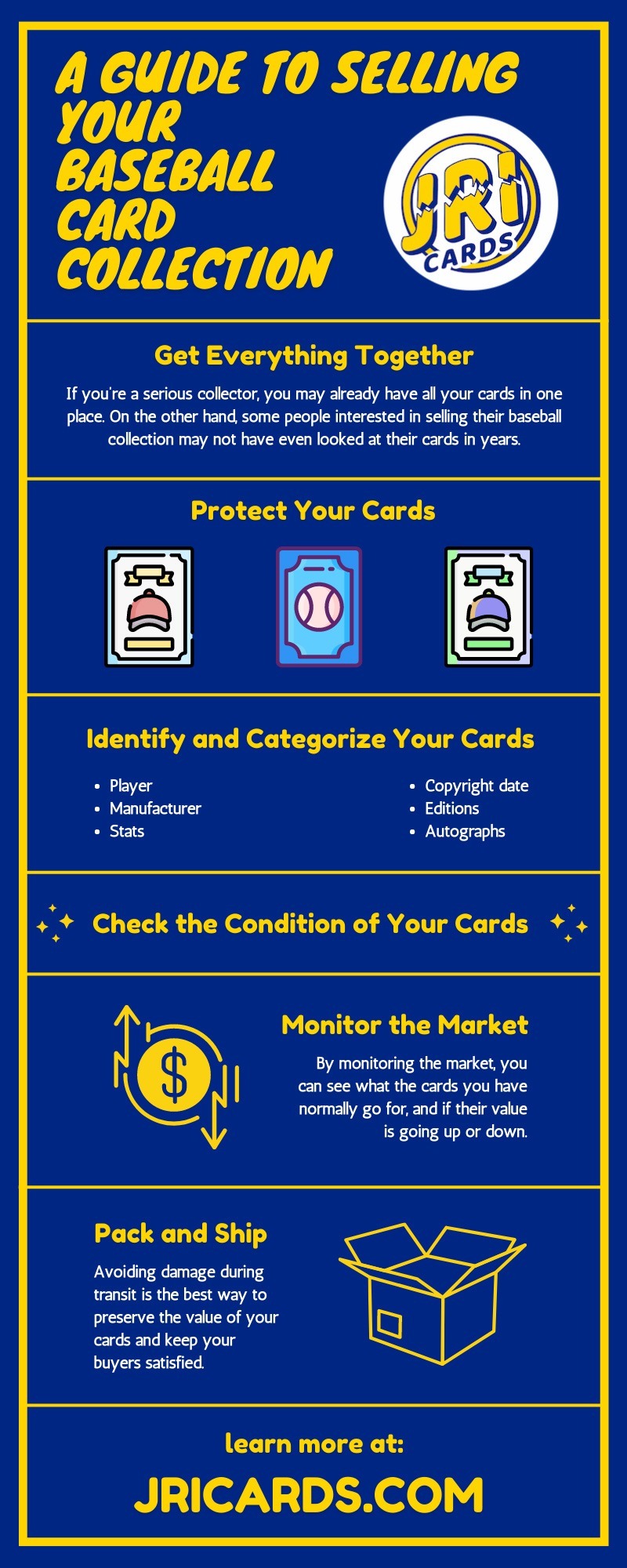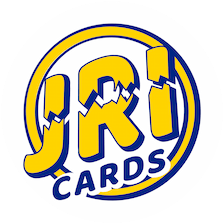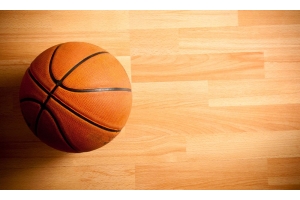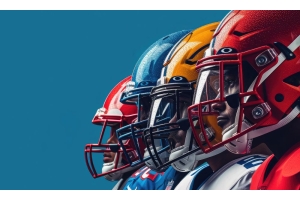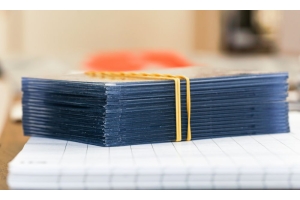A Guide to Selling Your Baseball Card Collection
A Guide to Selling Your Baseball Card Collection
Baseball cards have been around for many years, and many casual and professional collectors have amassed a hefty collection. It’s such an easy thing to collect, but after building this collection up, some people are probably wondering how to sell their baseball card collection. It can sound daunting at first, but selling your collection will be easy once you get all the cards and information together!
Get Everything Together
The first step to selling anything, including your baseball card collection, is getting everything together. If you’re a serious collector, you may already have all your cards in one place. On the other hand, some people interested in selling their baseball collection may not have even looked at their cards in years. Some collectors are not collectors but people who have inherited different bins and storage containers full of cards they had as a child.
Regardless of your circumstance, getting all the cards you want to sell together in one place is important. You may have some cards you want to keep, whereas other cards you’d be more inclined to sell. Getting everything together and figuring this out is the first step you need to accomplish to sell your collection. When getting your cards together, you may notice the following:
- Card repeats
- Your favorite cards
- Complete card sets
- Card sets that are missing one or a few cards
- Cards that aren’t even baseball cards
Some of these may not have the biggest impact on helping you decide what you want to sell, but it’s still important that you get everything together and organized before doing anything else.
Protect Your Cards
It’s also important that you make an effort to protect your cards. Depending on how old your cards may be, they could already be worn and aged. Even if this is the case, protecting them by putting them in sleeves will help ensure they don’t suffer any more damage and depreciate in value. Gradings are important with all kinds of cards, including baseball cards; if you don’t put your card in a sleeve and you accidentally bend, scratch, or stain it, that value decreases immensely. Thankfully, card sleeves are relatively cheap. You can get 100 or more for about five dollars, and they can potentially help to retain the value of your card.
Identify and Categorize Your Cards
Once you have your cards together, it’s time to research. There are a variety of baseball card companies, and there are even more variables that can influence the cards’ value, such as the following:
- Player
- Manufacturer
- Stats
- Copyright date
- Editions
- Autographs
It’s a lot of information to account for, but finding out all these details can help you know whether a card you own is worth $1, $1,000, or more. Thankfully, all this information is relatively easy to sort through. Various sites and resources have created dense catalogs of the different kinds of baseball cards and all their existing variations.
For example, Babe Ruth and Jackie Robinson are some of the more popular players in the history of baseball. Because of that, different manufacturers have made cards for both players multiple times over the years. An original card from when they were players will be much more valuable than a card released today, so gathering these details will help you know exactly what your cards are worth.
Check the Condition of Your Cards
You cannot understate the importance of the condition of your cards. It helps determine the value, and by looking at the condition yourself, you can better know how much to sell your cards for. A pristine card with no blemishes will go for much more than a card stained with coffee, so checking your cards’ condition is vital to selling them. Once you know what a grading company would grade your card on a scale of 1 to 10, selling it will be a lot easier.
Consider Professionally Grading Your Cards
You can judge the quality of the cards yourself, but if you have a card you think is exceptionally valuable, you may want to consider getting a company to grade it. If you list a card yourself that should be valuable, but it doesn’t have an official rating, it will go for much less than what it may be worth. You shouldn’t send cards to a grading company if you estimate their value to be low; however, if you suspect that some of your cards may be worth a lot more, it may be time to send them off to a professional grader like Professional Sports Authenticator (PSA) or Beckett Grading Services (BGS).
Monitor the Market
After knowing what you have and the quality, the next step in selling your cards is to start monitoring the market. By monitoring the market, you can see what the cards you have normally go for, and if their value is going up or down. There’s no clear answer to when to sell, as it’s a guessing game at this point; however, when you do market research, you’re not going in completely blind.
Vet Different Dealers
In addition to monitoring the market, this is the best time to start researching how to sell your cards. The most common places where people sell their cards include sites like eBay or Craigslist, but there may be better places to sell these cards.
If you’re new to selling, the better option is to sell through a reputable card dealer. Some cities have card shops open to buying cards from you, but if this isn’t an option for you, some online stores also buy cards. Since these online stores have a history and reputation, you can generally trust them to give you a good price and even better service.
Pack and Ship
If you’ve opted to sell your cards online through eBay or an online store, it’s time to pack and ship them. Cards can easily get damaged in transit, so pack them with lots of bubble wrap or peanuts, as well as top loaders. Then, use painter’s tape instead of scotch tape to safely keep your cards in the top loader. Snap cases are another great way to keep the cards safe from damage. Avoiding damage during transit is the best way to preserve the value of your cards and keep your buyers satisfied.
Selling your baseball card collection requires a little work and research, but once you get everything in order, it will be a breeze. Some people may not want to sell their cards, but if you sell many of your repeats or cards that aren’t your favorite, you can use that money to purchase better cards.
If you’re interested in some vintage baseball cards for sale, come to us at JRI Cards. We have plenty of cards and box breaks, so you can upgrade your collection with great retro baseball cards!
